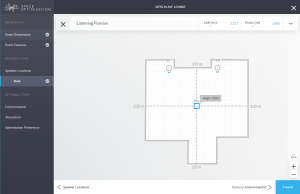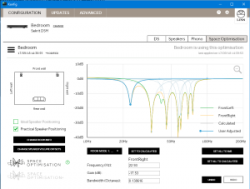Difference between revisions of "Guide:Space Optimisation"
m (→What are the differences between the Konfig Space Optimisation and Linn Account Space Optimisation?) |
m (→What are the differences between the Konfig Space Optimisation and Linn Account (Kloud Konfig) Space Optimisation?) |
||
| Line 44: | Line 44: | ||
===What are the differences between the Konfig Space Optimisation and Linn Account (Kloud Konfig) Space Optimisation?=== | ===What are the differences between the Konfig Space Optimisation and Linn Account (Kloud Konfig) Space Optimisation?=== | ||
| − | : | + | {{Info:Konfig_vs_Kloud_Konfig}} |
<!-- | <!-- | ||
Revision as of 14:10, 22 August 2022
 for ALL Linn DS/DSM products |
 Linn Account Space Optimisation from Davaar64 => |
 Linn Konfig Space Optimisation & Space Optimisation+ |
Linn Space Optimisation is currently configurable using either the Konfig app or the Linn Account Manage systems.
Click the above picture/icon for more information of that version of Space Optimisation.
More details of what Space Optimisation is can be found at www.Linn.co.uk
What is the difference between Space Optimisation & Space Optimisation+?
- This is applicable to both Linn Konfig and Manage System/Kloud Konfig
- Space Optimisation is for NON-Exakt systems. This uses the direct analogue outputs of the Linn DS/DSM
Is the Linn Account Manage systems only available for the new Linn DSM's
- Both Applications can be used for ALL Linn Products.
- The only limitation is that the Linn DS/DSM must have Davaar64 to run Linn Account Manage systems]
Why don't you use a Microphone in Space Optimisation?
- Check this link for more detail.
Can I use "Linn Account Space Optimisation" with my Exakt system?
- From November 2019 you can now use Linn Account Space Optimisation with Stereo and Surround Exakt systems.
What are the differences between the Konfig Space Optimisation and Linn Account (Kloud Konfig) Space Optimisation?
- The new version of Space Optimisation uses highly sophisticated acoustic modelling to model the interactions between your speakers and the room; this acoustic modelling is based on the finite-difference time-domain method. A simple two-dimensional analogy to this method of acoustic modelling is of a fishing net laid over a pond; each knot in the net defines a discrete measurement location, so that when a stone is thrown into the pond, we can track the resulting ripple by measuring its height at each knot.
- The spatial discretisation employed by this method of acoustic modelling allows the new version of Space Optimisation to correctly consider the effects of:
- non-rectangular rooms;
- the placement of features like doors and windows;
- And the location and rotation of your speakers.
- Furthermore, the time-domain formulation of this method of acoustic modelling means that the new version of Space Optimisation can now reduce both the energy and decay time of any artificial distortions caused by the interactions between your speakers and the room, resulting in both a flat frequency response and a uniform decay time. :Finally, the new version of Space Optimisation has been designed to give a better balance of low- and mid-frequency energy.